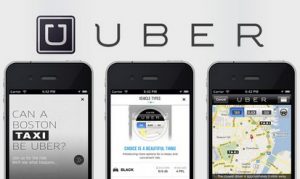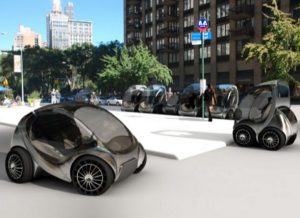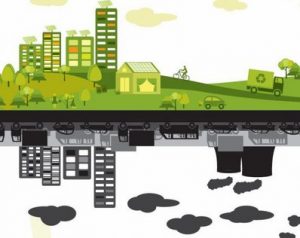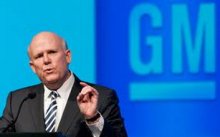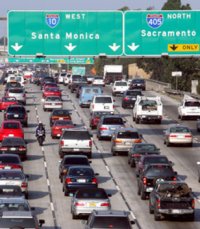 It’s been a big year for breaking news on the clean mobility front, with General Motors investing a half billion in Lyft and Apple announcing last week that it’s investing $1 billion in Didi Chuxing Technology. Apple appears to be just as serious about investing in mobility services as is Silicon Valley neighbor Google and its self-driving car project.
It’s been a big year for breaking news on the clean mobility front, with General Motors investing a half billion in Lyft and Apple announcing last week that it’s investing $1 billion in Didi Chuxing Technology. Apple appears to be just as serious about investing in mobility services as is Silicon Valley neighbor Google and its self-driving car project.
Here’s my thoughts on what’s behind all of it:
- Uber’s global domination: Didi is part of an international coalition announced in late 2015 with Lyft in the U.S., India’s Ola, and Southeast Asia’s GrabTaxi, to compete with ridesharing giant Uber. Uber has spent millions of dollars to grow its share of the Chinese market, but is far behind Didi with its larger fleet of cars. Uber has set a target of operating in 100 Chinese cities by the end of this year. The company said it’s able to invest in the China market because it’s making $1 billion in annual profit from its 30 largest global markets. Uber is facing pressure in other markets where cities like Austin, Texas have blocked it from competing with taxis; and a $100 million settlement with drivers in California over the “employee vs. independent contractor” job classification legal issue. China is still on the top of its list of priorities.
- Didi is booming: Didi and its ridesharing platform serves more than 11 million rides a day and about 300 million users across China, according to the company. Apple’s investment brings Didi’s funding round to $3 billion to a startup company now valued at about $26 billion, according to people familiar with the matter. Didi already has backing from Alibaba Group Holding and Tencent Holdings, the country’s two largest Internet companies. Didi, formally known as Xiaoju Kuaizhi Inc., was created last year when separate apps backed by Tencent and Alibaba merged. Didi now serves 400 Chinese cities with 14 million registered drivers.
- The future of Apple: Apple continues to lose share in the smartphone business, a segment the company propelled in 2007 when it launched the first iPhone. Google’s Android phone has taken the lion’s share of that market. China has been a very important market for Apple to focus upon, where it’s invested heavily in a manufacturing plant for its mobile devices. Billionaire investor Carl Icahn recently sold his position in Apple, largely due to the company’s lagging performance in China and that region overall. In its most recent earnings report, the company revealed its revenue in China fell by 26%. Apple has been looking at other technology services in recent years with mobility at the top of the list, which is behind its near-secret testing grounds for autonomous and electric vehicles. CEO Tim Cook has highlighted higher-margin services such as ride-hailing firm Didi as a growth area, and suggested he would use some of the company’s $200 billion-plus cash reserves for investments.
- China is a very hot market: Automakers have joined ranks with other industries, such as mobile devices, in setting up manufacturing plants and marketing to consumers in China’s booming economy. Labor is cheap and skilled in China, and government incentives and low-cost leasing offers are plentiful for the largest automakers to come to China to set up factories. The audience is massive as well, with China hosting the world’s largest market for electric vehicles and internal combustion engine vehicles. Chinese consumers are buying their share of technology products and are tapping heavily into e-commerce and internet usage. It’s very typical to hear about internet companies like LeEco, led by billionaire founder and internet icon Jia Yueting, investing in Faraday Future and the recently revealed LeSEE electric concept car. Tesla Motors also sees growth in China as integral for its future profitability. China’s economy and vehicle sales have softened in the past year, but compared to other markets around the world, China is still considered to be the most important one to be established within.
- Mobility pivotal in crowded cities: China has several cities seeing dramatic growth in population, vehicle traffic jams, and air pollution. Established cities like Beijing and Shanghai are congested with cars and trucks, creating serious air pollution hazards being addressed by the government. Beihai, China is predicted to be the world’s fastest growing city in the next few years with annual growth rates of 10.58% in population from 2006 through 2020. As U.S. cities such as San Francisco, New York City, and Los Angeles have discovered in recent years, area residents are clamoring for more mobility options like ride-hailing and ridesharing firms Didi, Uber, and Lyft; carsharing services such as Zipcar and Car2Go; improved rail and municipal transportation; protected bike lanes and racks; and creative options such as what Lyft and investor GM are testing out in short-term rental of electrified vehicles and gas-engine cars to Lyft drivers. Cities around the world are facing very similar conditions as Beijing and Los Angeles with congestion and pollution and are taking on measures to improve it – including Rio de Janeiro, London, and Mexico City. Didi has been a fast-growing mobility service in China as consumers demand to get from Point A to Point B for less cost and cleaner air.
- Sustainability theme: Emily Castor, director of transportation policy at Lyft, spoke on a panel last week at ACT Expo on the future of clean mobility. Castor talked about how its ridesharing now makes up 40% of the rides in 15 U.S. cities testing out the Lyft Lanes ridesharing service. Castor also talked about a short-term lease program Lyft is trying out with General Motors offering Lyft drivers an opportunity to rent a Chevrolet Volt for rides. Sustainability has been built into Lyft’s strategy of providing mobility services in cities, Castor said. Didi and other Aboptions to reduce their stress and transportation cost, and to feel like they’re contributing something to their community’s improving air quality.
- The sharing, on-demand economy is taking off: Ride-hailing and ridesharing services like Uber, Lyft, and Didi find mobility services to be highly profitable. They serve as a third-party company joining together consumers looking for rides with car-owner drivers looking to make additional income. They use the sharing platform invented and branded by Uber and competitors to gain access to fast, affordable, efficient rides. This model of the “sharing economy” or the “on-demand economy” is being used by AirBNB to match up homeowners who have an extra bedroom with travelers looking for good lodging deals. Amazon has been expanding its use of independent contractors nationwide to meet a promise to deliver its Prime Now orders within two hours of the order being placed. Amazon is competing with Google, Wal-Mart, and other retailers offering fast and cheap delivery services. Food delivery services like Postmates, GrubHub, and DoorDash are taking off in cities across the U.S. Their business model is nearly the same as Uber and Lyft – independent contractors driving their own cars and using the mobile app to deliver service and produce income.
- How Didi could play into Apple’s autonomous vehicle technologies: Analysts have been speculating that Apple’s investment could be tied into its autonomous vehicle strategy. For one thing, Didi provides Apple with a rich data source for its self-driving vehicle push. Didi’s ride-hailing app is closely linked to payment services, such as Apple Pay. Didi ride transaction data can be the foundation for other mobile commerce transactions such as deliveries. Apple will gain extremely valuable date on driving patterns, rider habits, traffic data, and payment transactions. Apple, like Google, will be part of the technologies that shape the future of autonomous vehicles just as much as the self-driving car will provide.

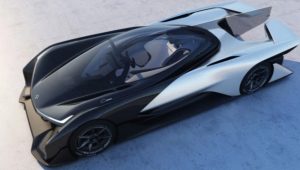 Faraday Future: This Chinese startup has been getting a lot of attention in the past few months, with that culminating at the Consumer Electronics Show in Las Vegas. The company is backed by Chinese billionaire Jia Yueting and plans to build a 900-acre, $1 billion factory in Nevada in the near future. Faraday Future unveiled the Batmobile-like FFZERO1 in Las Vegas, which has four electric motors (one at each wheel) combined that deliver more than 1,000 horsepower, enough to send the car from 0 to 60 mph in under three seconds and to a top speed of 200 mph. What’s been most interesting about Faraday is the platform architecture that it’s built on. It’s very flexible – Faraday can add or remove batteries, shorten or extend the chassis depending on the body that will be attached, or other applications. It’s a much faster process than what traditional OEMs go through – new vehicles can be production ready in 18 to 24 months, the company said. There’s talk about Faraday Future vehicles being deployed in Uber-like ridesharing services and as autonomous vehicles. Wherever this new startup is heading, it gained a wave of buzz and news coverage at CES and the Detroit Auto Show.
Faraday Future: This Chinese startup has been getting a lot of attention in the past few months, with that culminating at the Consumer Electronics Show in Las Vegas. The company is backed by Chinese billionaire Jia Yueting and plans to build a 900-acre, $1 billion factory in Nevada in the near future. Faraday Future unveiled the Batmobile-like FFZERO1 in Las Vegas, which has four electric motors (one at each wheel) combined that deliver more than 1,000 horsepower, enough to send the car from 0 to 60 mph in under three seconds and to a top speed of 200 mph. What’s been most interesting about Faraday is the platform architecture that it’s built on. It’s very flexible – Faraday can add or remove batteries, shorten or extend the chassis depending on the body that will be attached, or other applications. It’s a much faster process than what traditional OEMs go through – new vehicles can be production ready in 18 to 24 months, the company said. There’s talk about Faraday Future vehicles being deployed in Uber-like ridesharing services and as autonomous vehicles. Wherever this new startup is heading, it gained a wave of buzz and news coverage at CES and the Detroit Auto Show.